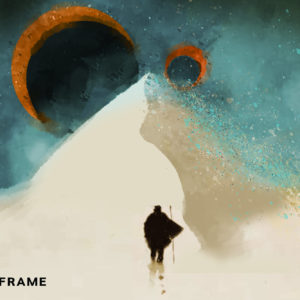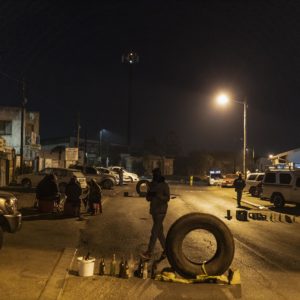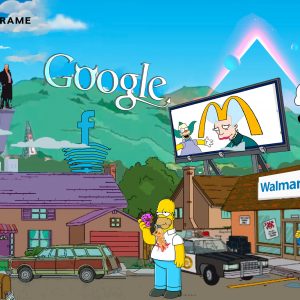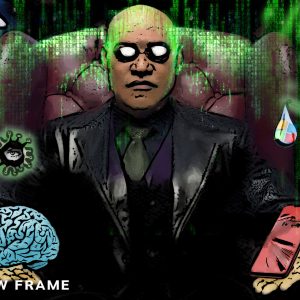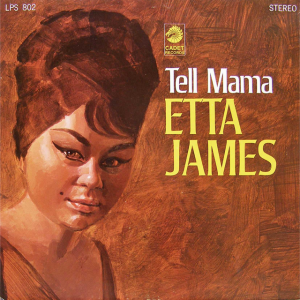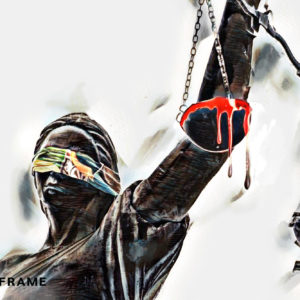‘The Batman’ and vigilantism in pop culture
In the latest film, the dark knight’s revenge fantasies are exposed as unhinged, as his foes no longer only hide under bridges but also brazenly roam the corridors of power.
Author:
1 April 2022

It is a cold and rainy Halloween night in Gotham, a city blighted by violent crime, institutional dysfunction, poverty and drug abuse. Along with these social ills, masked vigilantes and serial killers roam the rubbish-strewn streets.
Over a sinister orchestral score, a narrator describes his personal war on the “criminal element” of the city: “They think I’m hiding in the shadows, watching, waiting to strike. But I am the shadows.”
In a dilapidated subway, a street gang in ghoulish clown make-up is about to attack a lone commuter. They are stopped, however, by the sound of a terrifying figure slowly emerging from the dark, boots dragging on the concrete.
Related article:
This creature of the night proceeds to beat up the gang – aside from one young member who wisely stays out of the fray. But rather than being elated that he has been saved from crime, the terrified commuter begs Batman, “Please don’t hurt me”, in fear that he’s next. And he is right to be afraid of the looming spectre. Vigilantes are highly disturbing.
Rather than protecting helpless victims of crime, they are often associated with extreme public violence, xenophobia and extortion, such in the miltarised Operation Dudula, which has recently been in the news for its attacks on migrants in South African townships, or the right-wing death squads that terrorise the impoverished in the favelas of Brazil.
The creation of Batman
The comic book character Bruce Wayne/Batman, created by Bob Kane and Bill Finger in the late 1930s, is a privileged white man who processes the trauma of his parents’ murder when he was a child by dedicating his extensive resources to an obsessive campaign for vengeance – limited only by his refusal to use guns or to kill. In the 2020s, where social and economic inequality keeps growing, this depiction of a wealthy person taking the law into their own hands is more alarming than heroic.
In The Batman (2022), the latest movie iteration of the story, director Matt Reeves and lead star Robert Pattinson address these contradictions head on. In interviews, Pattinson had discussed how this version of the character is “not a hero”. He is more like an addict, who nightly relives the trauma of his parents’ deaths.
The plot focuses on how a serial killer, nicknamed the Riddler (Paul Dano), is killing members of Gotham’s elite. As he investigates, Pattison’s Batman is confronted with the realisation that the city’s gangs and murderers are actually manifestations of elite corruption. The real villains are compromised officials, greedy urban developers and politically connected, violently misogynistic mob bosses.
Related article:
Rather than inspiring hope, the emergence of the Batman character has encouraged even more extreme vigilantes. The Riddler, and the followers he develops on the fringes of the internet, are motivated by a fanatical interpretation of justice, which directly alludes to the rhetoric of contemporary far-right movements and mass shooters.
The film, however, does not fall into a simplistic “vigilantes are bad, trust the cops” argument. With a few notable exceptions, like the principled Jim Gordon (Jeffrey Wright), the Gotham City Police Department is shown to be a force built on extortion and corruption – Batman fights officers with the same ferocity he does muggers.
Even more importantly, it positions Selina Kyle/Catwoman (Zoë Kravitz) as a female and working-class mirror to Batman. Like him, she has lost both her mother and girlfriend to the violence that pervades Gotham. But while he grew up as an orphan in a penthouse, she experiences first hand how the city does not care for those who are not “privileged assholes”. Towards the end of film, she even alludes to a class retribution form of vigilantism, announcing her plan to “knock over CEO hedge fund managers”.
Pulp justice
The Batman is a not revisionist interpretation of the character and his world, but remains faithful to how its many comic book and film versions have combined revenge fantasies with insights into the psychology of crime and punishment.
The character was created in a period defined by the Great Depression and the rise of European fascism. In an era of extreme social tension and class disparity, pulp detectives and vigilantes become fictional figures that represented retribution within an unjust system.
Kane and Finger created Batman as an avenger figure who used a playboy persona to disguise his true mission. They were both first-generation United States immigrants, whose Jewish parents were forced to flee their home towns to avoid persecution from state-supported vigilante groups such as the notorious Black Hundreds in Russia.
Kane and Finger grew up in impoverished urban slums, surrounded by the constant threat of street crime and gangs. Such experience filtered into the Batman character. While he was created at the same time as characters such as Superman and Wonder Woman, he lacked both their super powers and their optimistic personalities.
Related article:
When you strip away the character’s armour of wealth and privilege, Batman is essentially a victim of trauma, attempting to enforce a sense of order in a world ripped apart by a moment of shocking violence. This feeling of being eternally stuck – and the desperate need to assert control – is something to which anyone who has been traumatised by violent crime can relate.
While the early Batman comics depicted him as a noir vigilante, the character was toned down to be more appealing to a younger audience. But by the 1980s, the comics returned to a darker mode, with acclaimed graphic novels such as The Dark Knight Returns (1986), Batman: The Killing Joke (1988) and Arkham Asylum: A Serious House on Serious Earth (1989) combining dystopian imagery, gothic urban horror and warped psychopathology.
Instead of being a simple law and order tale, where the police and propertied are always on the side of right, the series has often portrayed its villains and antagonists as sympathetic, if misguided.
Related article:
The tortured scientist Mr Freeze and the version of Catwoman played by Michelle Pfeiffer in Batman Returns (1992) are both victims of corporate crime, taking revenge on the venal business people who destroyed their lives. (Fast food giant McDonalds withdrew their advertising deal for Batman Returns because they considered it too transgressive for younger audiences.) The character of Poison Ivy defends the natural environment, stating in a famous comic panel: “The world can’t survive without the bees … but the world will never miss a greedy CEO.”
Even especially callous villains like Dano’s the Riddler, or Joaquin Phoenix in his Oscar-winning portrayal of the Joker in 2019 are shown as disturbed characters turned into monsters because of the neglect and structural cruelty of Gotham. In The Batman, the Riddler describes growing up in an orphanage, with rats biting his feet and babies dying because of the cold – a visceral depiction of the reality of impoverishment generally avoided in Hollywood films of this size.
The fear of crime and the desire for retribution are powerful emotions that can elicit radically different responses. While progressives may see the need to challenge the social injustices that undergird crime and corruption, conservatives discuss it in terms of individual immorality and a desire to punish often lower-class “sickos”.
The elite as the true villain
This ambiguity is captured in Batman: Year One (1987) where Batman crashes an upper-class gala, eyes burning like a tiger, and declares: “Ladies, gentleman, you have eaten well. You’ve eaten Gotham’s wealth. Its spirit. Your feast is nearly over. From this moment on, none of you are safe.”
The metaphor of a society’s wealth being devoured by the powerful is an accurate depiction of the destructive excess of capitalism. But in subsequent years, Year One’s writer Frank Miller has become associated with right-wing politics, and the belief that society needs to be purged of “decadence” and returned to traditional hierarchies. His later work 300 (1998), which romanticises the militaristic and oppressive culture of ancient Sparta, has become a major part of the iconography of the far right.
In a similar vein, extremist group the Proud Boys and the Blue Lives Matter reactionary movement have adopted the skull logo used by Marvel Comics character Frank Castle/Punisher. It was seen when Trump supporters attacked the US Capitol building in 2021. It is even currently being toted by a private security company in Johannesburg.
Related mixtape:
The far right see the ex-soldier Castle as a righteous crusader, but in most of his comic book appearances he is treated as a borderline psychopath. The Punisher’s original creator Gerry Conway has repeatedly said that he was created as a critique of the failings of the justice system and not as a model to emulate. He even launched a “Skulls for Justice” T-shirt to raise funds in the fight against racism and police violence. But its association with right-wing extremism has become so fixed that Marvel has abandoned the logo in its current comic book adaptation.
It would be a mistake to reduce vengeance tales to right-wing politics. In the past few years, a wave of films and television have explored women’s responses to men’s violence, such as Jennifer Kent’s The Nightingale (2018), Michaela Coel’s I May Destroy You (2020) and Emerald Fennell’s Promising Young Women (2020).
In Fennell’s take, Cassie (Carey Mulligan) becomes a vigilante after her best friend is raped at their college and then commits suicide when authorities decline to investigate the “respectable” man who perpetrated the crime. She now spends her nights exposing and shaming predators by feigning intoxication but then revealing she is sober when men attempt to take advantage of her.
Related article:
The film reflects how the criminal justice system, not only in the US but throughout the world, is dismissive of victims of sexual assualt. Cassie’s vigilantism is a response to the failings of the authorities, but, even though a legitimate desire to right wrongs fuels it, the story shows how it can become destructive.
Cassie’s rage emerges out of the gap between the laws that supposedly govern society and the cynical reality of power, where wealth and influence allow even the worst criminals to evade censure. The fictional vigilante therefore becomes a form of wish fulfilment, offering the rough justice we do not readily see in the world.
In the most recent season of the TV show Succession, the Waystar-Royco corporation is being investigated for years of abuse against its employees. As the family who own the corporation attempt to use their political influence to avoid investigation, one character expresses fear that law enforcement may “go Batman” in their prosecution, indicating how the rich and powerful dread having laws properly applied to them.
Instead of cartoonish street gangs, the most destructive criminals and abusers are often hidden in plain sight, not lurking in the shadows, but in the brightly lit corridors of power.

